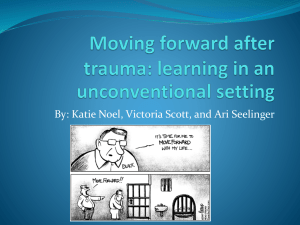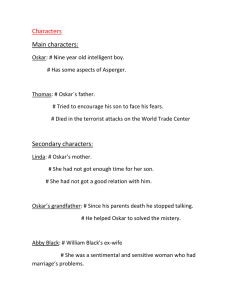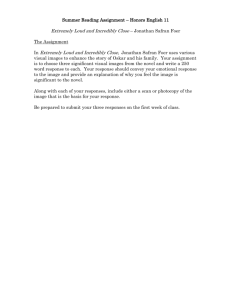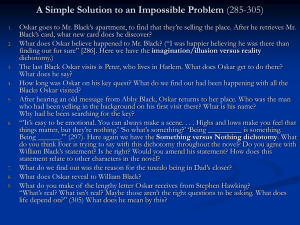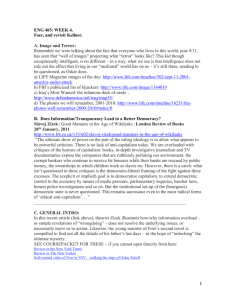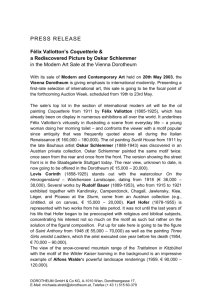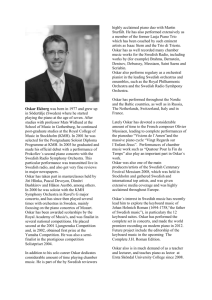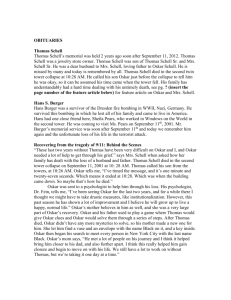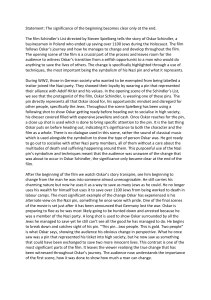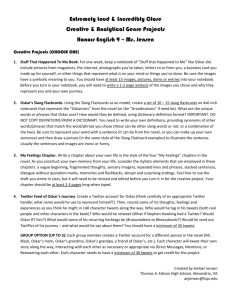Extremely Loud and Incredibly Close
advertisement
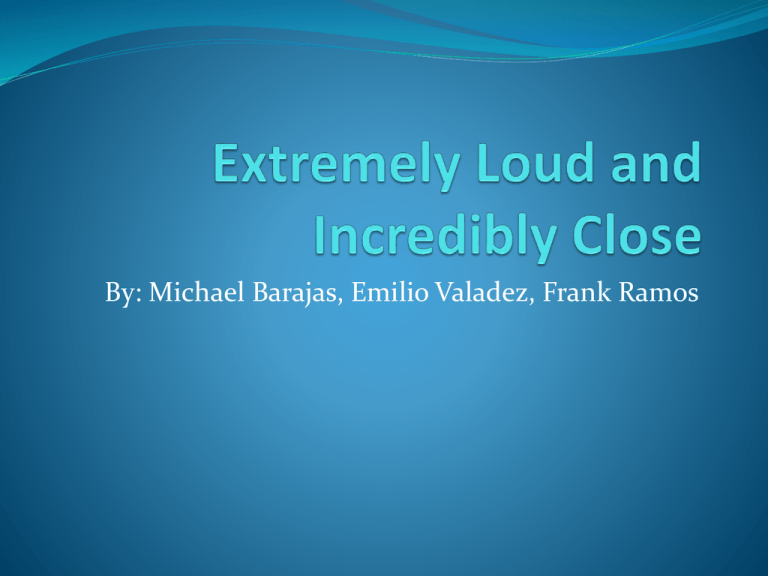
By: Michael Barajas, Emilio Valadez, Frank Ramos Metaphors Plenty of metaphors are used throughout the entire book. On page 71 Oskar mentions that he feels like there was “a hole in the middle,” of him. Voice In the early part of the book, Foer is able to portray the young characteristics of Oskar by talking how a 9 or 10 year old would. Rhythm Throughout the book it shows that Oskar’s tone of voice is more of a face paced, and childish manner while the grandmother would speak in a more mature way. The sense in rhythm is very different from the two. The Grandfather talks with everything put together. Repetition In different parts of the book Foer will mention one thing, he’ll then use the same phrase in a different part. Often times, the Grandma will mention that something isn’t “One hundred dollars,” or that her eyes are crummy. He will also use anaphoras throughout the text. Foreshadowing Foreshadowing was used to go back and forth between points in the book. Oskar talks about his father before anything happens and then he’ll talk about events after things happened to his father. Allusion Foer never seems to mention 9/11 directly. He does talk about the event as “ The morning of the bombing,” and “Planes going into buildings. Bodies falling.” Parallel Structures On page 74 Foer uses parallel structures to flow from the events of the day Thomas Schell died. Oskar Each day there is something that reminds Oskar of his Dad, and these thoughts never seem to end. His innocence is also shown by the way he counts his lies and his disappointments. Pictures Oskar uses the pictures in his journal to remind him of an event that has happened. The author uses these pictures to give you an image of what is going on and sometimes as a foreshadow of what will happen.
